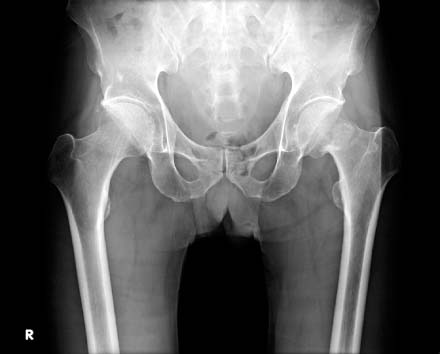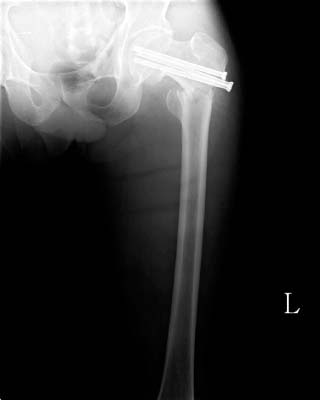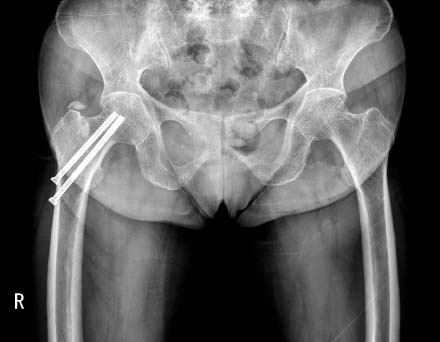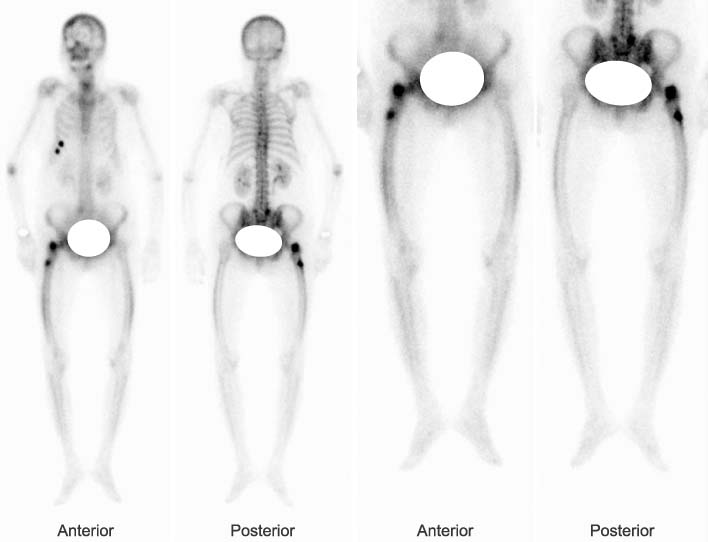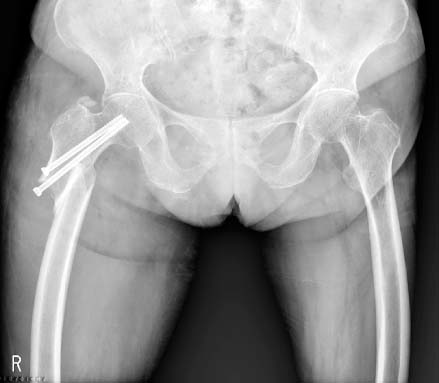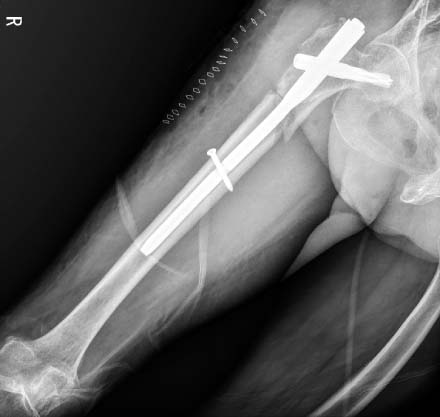J Korean Fract Soc.
2015 Oct;28(4):250-255. 10.12671/jkfs.2015.28.4.250.
Iatrogenic Subtrochanteric Fractures Related to the Surgical Error: Two Cases Report
- Affiliations
-
- 1Department of Orthopaedic Surgery, Hallym University Kangnam Sacred Heart Hospital, Seoul, Korea. hwangjihyo7309@gmail.com
- KMID: 2070352
- DOI: http://doi.org/10.12671/jkfs.2015.28.4.250
Abstract
- Iatrogenic fracture is not popular and might be recognized as a malpractice. Surgical error related to iatrogenic fracture which has occurred after an operation can be detected only by a surgeon. Stress riser fracture is another form of iatrogenic fracture also known as a Young's modulus fracture. As the majority of surgical related stress riser fractures can be preventive, the accurate prevalence is not known. The majority of fractures occurred in the weight bearing bones such as femur and tibia. The subtrochanter area is the most stress concentrated area in the human body, thus it is a common area for occurrence of stress riser iatrogenic fractures. We experienced 2 cases of stress riser iatrogenic fractures, which are related to technical errors, thus we report cases with literature review.
Keyword
MeSH Terms
Figure
Reference
-
1. Bennell KL, Malcolm SA, Brukner PD, et al. A 12-month prospective study of the relationship between stress fractures and bone turnover in athletes. Calcif Tissue Int. 1998; 63:80–85.
Article2. Johnson AW, Weiss CB Jr, Wheeler DL. Stress fractures of the femoral shaft in athletes: more common than expected. A new clinical test. Am J Sports Med. 1994; 22:248–256.
Article3. Kelly EW, Jonson SR, Cohen ME, Shaffer R. Stress fractures of the pelvis in female navy recruits: an analysis of possible mechanisms of injury. Mil Med. 2000; 165:142–146.
Article4. DiMaio FR, Haher TR, Splain SH, Mani VJ. Stress-riser fractures of the hip after sliding screw plate fixation. Orthop Rev. 1238; 21:1229–1231. 12385. Lung YT, Kam WL, Leung YF, Chung OM, Wai YL. Subcapital femoral neck fracture following successful trochanteric fracture treatment with a dynamic hip screw: a report of five cases. J Orthop Surg (Hong Kong). 2007; 15:238–241.
Article6. Shaer JA, Hileman BM, Newcomer JE, Hanes MC. Femoral neck fracture following hardware removal. Orthopedics. 2012; 35:e83–e87.
Article7. Mendez AA, Joseph J, Kaufman EE. Stress fractures of the femoral neck following hardware removal from healed intertrochanteric fractures. Orthopedics. 1993; 16:822–825.
Article8. Howard CB, Davies RM. Subtrochanteric fracture after Garden screw fixation of subcapital fractures. J Bone Joint Surg Br. 1982; 64:565–567.
Article9. Karr RK, Schwab JP. Subtrochanteric fracture as a complication of proximal femoral pinning. Clin Orthop Relat Res. 1985; (194):214–217.
Article10. Pelet S, Leyvraz PF, Garofalo R, Borens O, Mouhsine E. Sub- or intertrochanteric fracture following screw fixation of an intracapsular proximal femoral fracture: true complication or technical error? Swiss Surg. 2003; 9:82–86.
Article
- Full Text Links
- Actions
-
Cited
- CITED
-
- Close
- Share
- Similar articles
-
- Treatment of Subtrochanteric Fracture with Rowe plate
- Surgical Treatment of Femur Intertrochanteric and Subtrochanteric Fracture
- Subtrochanteric Femoral Fracture during Trochanteric Nailing for the Treatment of Femoral Shaft Fracture
- Surgical Treatment of Subtrochanteric Fracture of Femur with Spiral Blade Unreamed Intramedullary Femoral Nail
- Treatment of the Femoral Fracture Using Sirus(R) Nail: A Comparison of Complication according to the Entry Potal

